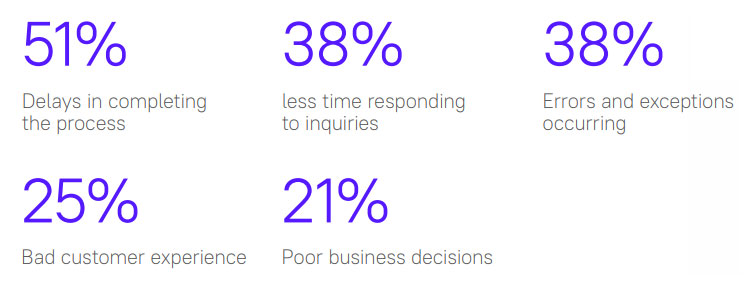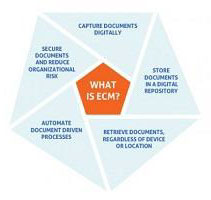
Headquarters: Pennsylvania
Customer Challenges: The client found itself struggling with its discount special process, which took many man-hours to plan and implement on the company’s portal. The runs were scheduled as far as 1 month in advance, took at least 12 hours to run and could only be run on the weekends. Updating the website with the specials would require over 12 hours in order to list the special discounts. Employees would work weekends and overtime to run the process. Listing last minute discount deals was difficult to put into place and would mean that food could near it’s expiration date by the time the special discount was listed on the website.
About the Customer: Our Client is a foods distributor for a variety of retail outlets based out of Myerstown, PA. It manufactures food in bulk, including candy, chocolates, nuts, dried fruit, baking supplies, packaging supplies and specialty items like organic and gluten free foods. The client delivers products to 29 states using its own fleet of local and long distance trucks. This business prides itself on delivering high quality products at a good value and building long lasting relationships with their clients.
Solutions: RST analyzed the Client’s environment and found inefficiencies in the database update process, including the fact that each time a special was run the entire database was updated to the portal. By changing processes looking at logs, inclusion rules and creating category codes RST was able to drastically reduce the processing time. The RST team set up new parameters to satisfy the business objective and created new category codes that made the database easier to manipulate. RST then took the data stamp from the last 24 hours and updated the portal price to only pick up the new changes. The entire process was reduced from a month in advance planning and 12 hours of run time to the ability to plan the same day and run the process in under 30 minutes. RST Factored various pricing driver changes- cost, customer, cat codes, contracts and generate accurate pricing for the Clients. As well as, provided a scalable platform to store prices and interface the same to various B2C and B2B systems including cloud driven solutions. For more information email info@rstsolutions.com.

Headquarters: Pennsylvania
Customer Challenges: The Client saw growth potential and in order to do that it saw a need to become a publicly traded company. Due to the restrictions of going public and the need to have predictable revenue, the Client needed an efficient way of tracking its multiple data flows and business processes. It could no longer afford to solely rely on home-grown applications, SQL database and Excel sheets.
About the Customer: Our Client is a customer-focused company, delivering an extensive portfolio of injectable products and fulfilling the evolving needs of the patients we serve through our unique network of global resources.
Solutions: Going public brings many pressures with it, including the need for better business predictability, being able to provide detailed financial disclosures to investors and being ready for accounting audits, among other things. Our team of highly skilled functional and technical experts recommended consolidating all business processes in an Enterprise Resource Planning (ERP) solution in order to tackle all the Clients business goals including visibility, improved reporting and planning, and improved efficiency. Our team then implemented the JD Edwards Manufacturing, Finance and Distribution modules to be conducive to a smooth business process flow. This ERP included integration of processes such as supply chain, products, manufacturing process, customer and vendors. Lot control, batch control and serialization features, which are mandatory for pharmaceutical companies, were also implemented to keep the Client in compliance with regulatory standards. With the JD Edwards ERP, the Client was able to go public and realized increased efficiencies in their business processes. Since implementing the ERP in 2014, the Client has set itself up to acquire two businesses and to realize continued growth in the pharmaceutical space. RST Solutions experts have been able to help the Clients acquisitions to integrate into JD Edwards ERP and have a continuous and smooth process flow.

Time is all around us, it is one of the most mysterious forces in the universe. What makes time such a precious resource is that you can never get wasted time back. Time has been the theme of great literary works from William Shakespeare to T. S. Eliot, Emily Dickinson, Maya Angelou, and more contemporaries like The Eagles, Collective Soul, and Keith Urban.
So, if time is a fundamental condition of human experience, how can we still tolerate so much wasted time in our day-to-day? How can it be that, in a time when technology envelops our lives, the financial services industry is still so heavily bogged down by time-consuming, manual processes? In processes that we’ve been trying to gain efficiencies for years, such as onboarding, it can still take more than a week—or sometimes, even months to onboard new customers.
Don’t go wasting my precious time
Financial services workers are wasting up to 8 hours per week trying to find, understand, and process data in documents. According to a recent ABBYY survey, this wasted time is resulting in delays in completing important processes, an increase in errors, leaving less time to respond to inquiries, resulting in bad customer experience.

Those surveyed are looking for an intelligent banking automation solution, one that can deal with the many unstructured documents involved in various processes that will enable faster and better decision-making, allow them to work on higher-value projects, and improve customer experience.
The unanimous comment we heard from survey respondents was that they need speed and simplicity, like what can be achieved through an easy drag-and-drop approach to automating document processing.
Turn documents into data with pre-trained, ready-to-use skills
Financial institutions can automate document-intensive processes like account opening and KYC by extracting data from paper-based forms with Intelligent Document Processing (IDP), that easily integrates with the core banking systems. IDP uses artificial-intelligence-based technologies to process structured, semi-structured, and unstructured documents.
IDP can replace manual processing–enabling not only automation, but also creating more efficient ways of interacting with customers–i.e., no-touch, mobile, digital first, anywhere, anytime.

Enterprise Content Management is a systematic approach to managing content throughout its lifecycle. It enables unstructured information — such as Word documents, PDFs, emails and scanned images — to be securely stored and made accessible to authorized users.
From commercial supply chains to contract management, HR processes to government administration, the driving force behind implementing an ECM solution is to do business more efficiently. By eliminating dependence on paper documents and organizing unstructured information according to business needs, organizations can simplify and streamline work.
Goals for implementing ECM. Customers commonly rely on ECM to:
Here are 5 key elements of an ECM solution:

Top 5 Elements of ECM
1. Capture documents digitally
Managing an organization’s content begins with the capture and importing of information into a secure digital repository. This can be any kind of document that is created, captured, stored, shared or archived, including:
A few methods of capturing these documents include:
Traditional methods of capturing documents require a great deal of effort and expense. Capturing documents in a digital repository eliminates many of the obstacles created by paper: labor-intensive duplication, slow distribution, misplaced originals and the inconvenience of retrieving files from offsite storage.
2. Store documents in a digital repository
With robust ECM systems, organizations can easily store any business-critical document in a digital repository, allowing users to:
The benefits of enterprise content management go far beyond document storage. A content management system also reduces the time, cost and complexity associated with managing documents that require retention schedules, throughout their life cycle, assisting in efforts to bolster regulatory compliance. In fact, a recent Nucleus Research study showed content management systems returning $6.12 for every dollar invested.
3. Retrieve documents, regardless of device or location
Once an organization’s records have been securely stored, you can:
Enterprise content management software helps eliminate time spent searching for information, enabling employees to answer information requests from clients, citizens and auditors immediately. More than that, staff have instant access to the information required to make better decisions about issues that can your organization’s bottom line.
4. Automate document-driven processes
Automation helps organizations eliminate manual tasks — such as photocopying or even drag-and-dropping digital documents — to achieve greater results with fewer resources. Some ECM systems have digital automation features that can:
Every day, businesses need purchase orders signed, records archived and employee vacation requests approved or denied. Automation moves these critical documents through the necessary steps of review and approval, in the order specified. The end result is processes that are more cost-efficient, streamlined and error-free.
5. Secure documents and reduce organizational risk
With strengthening compliance restrictions in a wide range of industries, organizations are increasingly using ECM systems to optimize records management practices and protect against risk. An enterprise content management system must provide customizable security settings to allow organizations to protect information from unauthorized access or modification. These settings should allow you to:
Leading ECM solutions enable line of business departments to manage user access independently — which means sensitive HR information stays within the HR department, while private financial information stays within the finance department, even if the information is stored in the same repository.

1. Capture Available Early Pay Discounts
One reason organizations don’t take advantage of vendor discounts is that they don’t have a defined workflow to consistently identify, flag and process invoices in the required time frame to qualify for the discount.
With the speed, efficiency, and automation that comes with the right document management software, AP staff can process required invoices and documents on time or ahead of schedule. This allows them to consistently take advantage of all eligible discounts while decreasing the cost to process invoices. Streamlining the cycle time to pay your suppliers on time also maintains positive relationships and elevates your brand in the marketplace.
2. Reduce the Costs of Long-term Data Preservation
Put an end to the paper chase! Depending on how you currently handle data preservation, records retention and disposal, your savings can be significant.
You save here in a few key areas:
Storage and Transportation: Keeping documents in offsite storage (along with transporting them to and from a location) can be costly. Electronic document management virtually eliminates this overhead, directly affecting the bottom line.
Filing and Locating Documents: AP staff can spend hours looking for files and filing them when they could be working on more strategic tasks and initiatives. Reducing the labor hours required for these time-consuming and tedious tasks can alsreduce turnaround time for document processing.
Re-purposing Space: Thanks to electronic document management, onsite storage space is drastically reduced or eliminated.
3. Ease of Access
It’s no secret that our world is more interconnected than ever, and that organizations need to think globally when it comes to their needs, whether it’s for their own staff or their clients.
Digital document management solutions address this by allowing for ease of access. Instead of sending physical invoices through an inconsistent, manual workflow to acquire approvals, a digital document management solution makes invoices, forms, contracts, and support documents easier to track, locate, view, share and approve for payment in a timely and efficient manner.
In addition, a complete digital document management solution should support un-tethered access to processes and documents from a mobile app. This way authorized users can view, review and approve invoices with the touch of a button, as well as access forms or documents on the go, anytime, anywhere.
4. Stay in compliance with Laws and Regulations Digital document management can make the compliance process easier for both AP staff and auditors by allowing you to:
5. Increase Process Visibility and Oversight
Visibility and oversight of processes are essential to keep AP running efficiently, but sometimes this can be a challenge without the right tools. This is where digital document management comes in. With a solution that can keep track of documents, where they go and the status, it’s never been easier to review and approve documents with the appropriate oversight.
In addition, digital document management solutions can gather data on workflows and how documents are being processed with reporting and analytics dashboards. See the whole process history of a document at a glance, including who approved it, when and how long the approval took. This gives AP staff insight into process bottlenecks, along with the ability to identify inefficiencies and hidden opportunities for improvement.
6. Leverage AP Staff Resources on Higher–Value Activities
Knowledge gained from increased process visibility goes beyond identifying staff needs. It’s a tool your AP staff can use for forecasting, analysis and reporting. With this data, they can make more informed and strategic decisions as they manage cash flow and allocate resources.
With the right digital document management solution, AP staff can spend more time on strategic initiatives in addition to expanding, maintaining, and enhancing relationships with vendors and cross-functional lines of business.
Organizations are working harder than ever to deliver sustainable, profitable growth through technology. And your role is being redefined to include leadership in technology strategy and digital transformation. Process Automation enables your organization’s Digital Transformation journey.
Our Solutions integrate all your data and applications into a single repository and drastically reduces the cost and busy work associated with manual/repetitive processes.